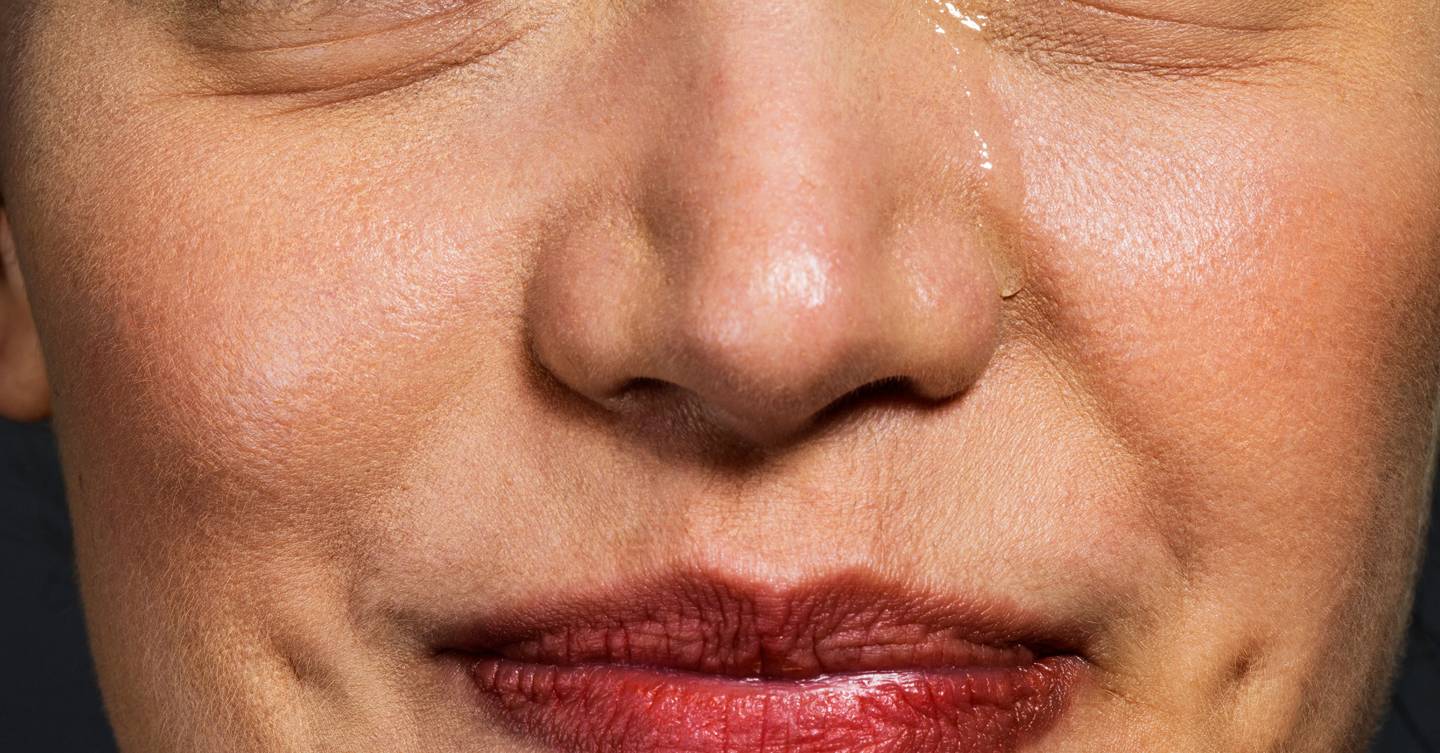We all cry, and there’s really no shame in it. Crying helps relieve stress and sometimes just feels good. But recently, hours after one of my emotion-expressing sessions, I realised that my skin was freaking out. Pimples took over my cheek area, making me wonder (and Google) enough times this year to justifying writing an entire article about it: Can crying cause your skin to break out?
First things first: We have to break down exactly what tears are to determine if they can cause breakouts. According to Mona Gohara, an associate clinical professor of dermatology at Yale, tears are just a combination of salt and water — neither of which have pore-congesting effects on the skin. However, there are other reasons that you may experience an acne flare-up after crying.
Joshua Zeichner, the director of cosmetic and clinical research of dermatology at Mount Sinai Hospital in New York City, says that rubbing the eyes and cheeks can cause low-grade inflammation that promotes breakouts. This phenomenon is called acne mechanica, which is acne that is triggered by excess heat, pressure, friction, or rubbing of the skin. “It is the same concept behind maskne, the acne from face masks,” he adds.
Gohara agrees and says that all that rubbing from crying can clog the pores, especially if you’re not careful with which kind of tissues you use. “If you’re using those scented ones or ones that are moisture-infused, you’re more likely to cause acne mechanica,” she says. Gohara adds that stress can also cause acne. So if you’re crying because you’re stressed out (been there!), that may be the reason behind those breakouts.
What can we do to prevent this? Gohara and Zeichner gave us three easy things to do to make sure we never break out during a crying session again.
Always pat the tears away
Grab a non-scented and non-moisturised tissue Like the Kleenex Trusted Care Facial Tissue, which are super gentle and two-ply. And gently pat those tears away, never rub. “Rubbing the eyes or face will just cause friction, leading to acne,” says Zeichner.
If you’re feeling extra, Gohara suggests gently dabbing your tears with a chilled glycolic pad. We like the Nip +Fab Glycolic Fix Daily Cleansing Pads because they provide a deep cleanse with exfoliating glycolic acid and witch hazel without breaking the bank. “These are soothing, and they decrease puffiness and prevent breakouts,” Gohara says. (Make sure you’re dabbing these pads on your cheeks where the tears run down to, not on your eyes.)
It may be time for a new face wash
If you tend to cry a lot, switch your cleanser to something less harsh. According to Gohara, harsh ingredients like sulfates in certain cleansers, plus the friction from rubbing your eyes, can cause the skin to flare up.
Switching to a gentler formula will likely prevent this. We love Cetaphil’s Gentle Skin Cleanser, made with only eight simple ingredients (water being one of them), because it’s affordable and perfect for people with sensitive skin and those with acne, eczema, and rosacea.
Don’t forget moisturiser
You should be hydrating every day, but switching to a moisturiser that will buoy the skin’s barrier will help prevent any breakouts. Gohara loves the Eau Thermale Avène Cicalfate+ Restorative Protective Cream, which coats the skin with a copper-zinc complex to help keep out any external aggressors and, in this case, friction. (Gohara currently works with the brand.)
If you’re anything like me and have experienced breakouts after crying, don’t blame the tears — it’s just the acne mechanica or stress. Right now, we all may be experiencing stress with the impending presidential election, so tears are normal but take deep breathes and hope for the best. If you do happen to shed a tear (or two), hopefully, these tips will prevent any acne from popping up.

